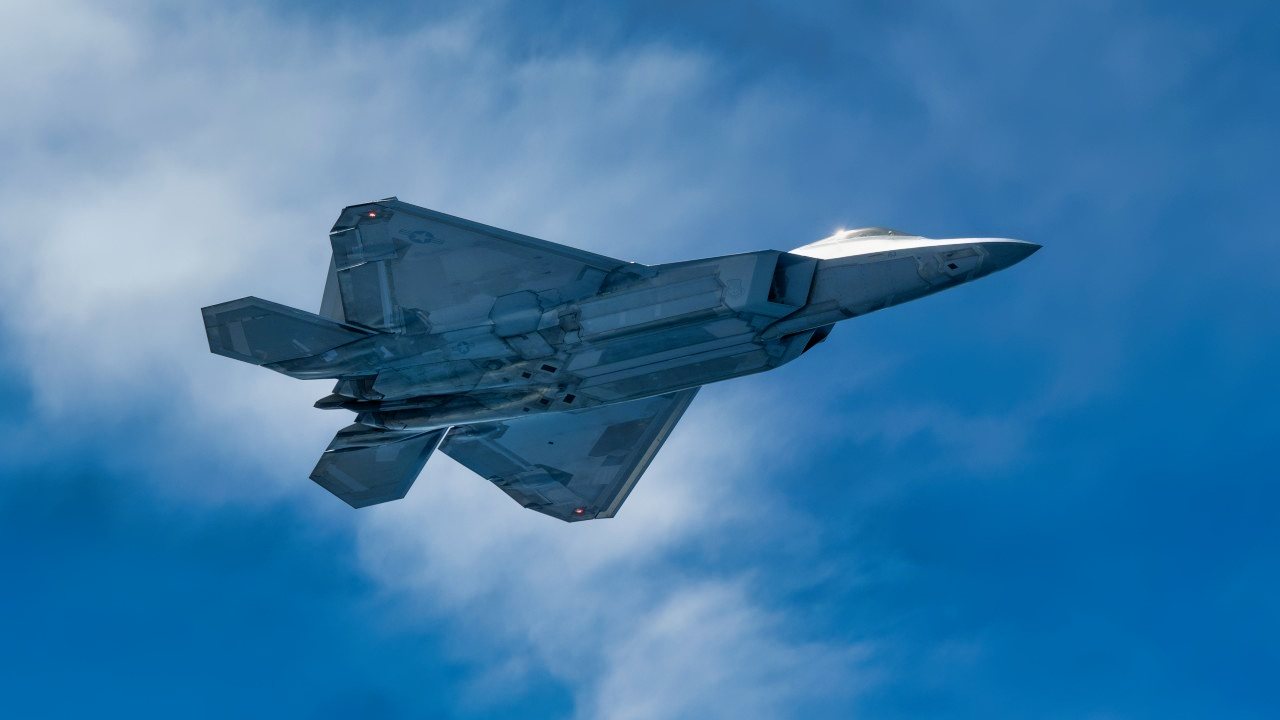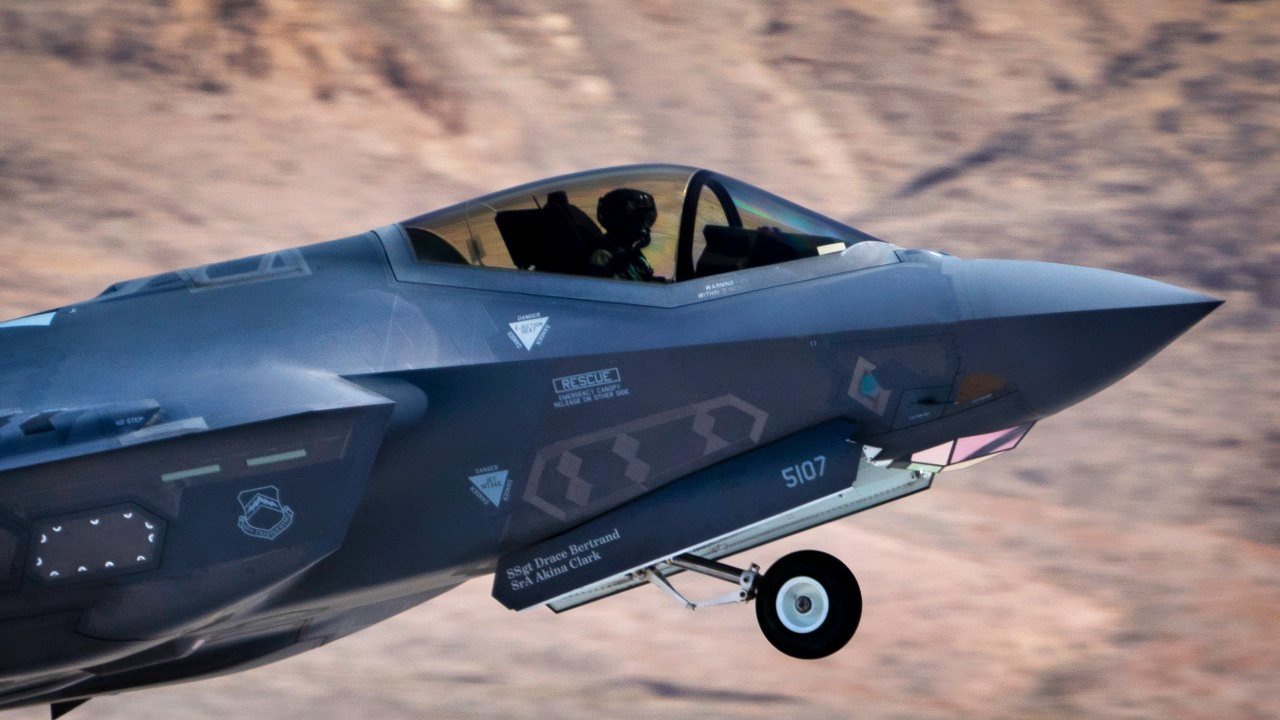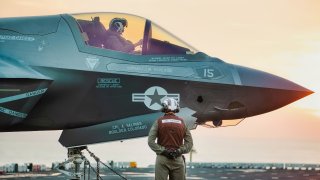Heat Problems Could Stop the F-35 Fighter Cold
Because of its stealth and information characteristics, the F-35 will be the primary manned platform in the transition to teams of collaborative drones. However, it can’t take on the role of countering China and protecting Europe if the thermal management upgrade isn’t in place.
Bar none, the F-35 Lightning II is the hottest fighter jet in the world. Israel’s F-35’s led the October attack on Iran’s air defenses, and last year, their F-35s tracked and shot down an incoming cruise missile. Two U.S. Air Force F-35s just landed on a highway in Finland, while a Japanese F-35 intercepted an intruding Russian patrol plane. More U.S. F-35s are in the Middle East and the Marine Corps F-35C is aboard the aircraft carrier USS Abraham Lincoln in US Central Command’s area of responsibility.
The F-35 Is Feeling the 'Heat'
In years ahead, the Air Force, Navy, Marine Corps, and 18 allies and partner nations are counting on the F-35 to shoulder many roles, from exotic electronic warfare to working with drones. But these advanced missions are in danger unless the F-35 Joint Program Office figures out a fast fix for the F-35 cooling system.
“Due to the massive leap in cooling and power needed to support post-2029 mission system upgrades on the F-35, the existing Power and Thermal Management System (PTMS) will need to either be massively upgraded or replaced,” the USAF has said.
Of course, this is the F-35 program, where nothing is ever easy. So, while the stealth jet itself is phenomenal, the mammoth F-35 program is once again taking too long to act. The Defense Department funded the upgrade program in FY 2024, and requested $126.3 million for it in FY 2025. It has strong support on Capitol Hill. Two companies are hawking their solutions. Plans called for the first phase contract award in Fall 2024. The mystery is: why isn’t this upgrade program moving faster?
The F-35 Power and Thermal Management System is a power package to start the engine, run environmental controls and manage the heat loads generated by systems on the fighter jet. There is widespread agreement that the F-35 is running too hot. Up in the front of the aircraft are advanced processors, sensor boxes, radar components, electronic warfare systems, and other mission and communications gear. All this makes the F-35 an information powerhouse, as long as the systems don’t overheat.
The F-35 was designed almost 25 years ago, when thermal management and cooling requirements were much lower. Originally, the F-35 system was expected to account for about 15 kilowatts of heat generated by onboard systems. Today F-35s are generating around 30 kilowatts. To compensate, the F-35 pulls more high-pressure “bleed air” off its engine. That works, but it also puts more wear and tear on the engine, increasing maintenance costs over time. A recent GAO report found that “the limitations of the current cooling capacity could impede post-Block 4 capabilities and mission systems as soon as 2029.”

As a result, the new requirement is for 62 kilowatts of cooling capacity, and the government would like to reach or exceed 80 kilowatts. The next step is for the Joint Program Office to match its PTMS requirements to Block 4, finalizing the power and thermal management system requirements so the competition can move ahead.
Technology is not the hold-up. Two companies, Collins and Honeywell, have said they are ready with solutions. (Choosing a winner will be up to prime contractor Lockheed Martin.) Honeywell is the insider, having been on the F-35 program from the start, with an integrated power and thermal management package and other systems such as the onboard oxygen generator or OBOGS. For its part, Collins has a long track record of solving thermal management for engines on commercial airliners like the 787, where every bit of efficiency helps contain fuel burn and costs. For the F-35, the Collins Enhanced Power and Cooling System (EPACS) has already demonstrated an 80-kilowatt thermal management capacity during an industry showcase in February.
The timeline is tight. The government has said the PTMS would be ready to install in F-35s in the 2030-2032 timeframe. Schedule slips could set back capabilities and make it harder to add the upgrade to new production F-35s.
Surely, the cooling solution is a great place to change how the F-35 program does business.

“I really wanted to make it clear to everybody that we need to change the way we do development in the F-35 program, and get ourselves to a place where we can truly deliver on our promises,” F-35 Program Executive Officer Air Force Lieutenant General Michael Schmidt told an Air and Space Forces symposium in September.
“Our service members urgently need an upgraded cooling and management system on the F-35 to keep pace with continuous modernization of the aircraft’s capabilities,” said Representative Joe Courtney (D-CT), a senior House Armed Services Committee member.
Cooling is a great place for a fresh start.
Because of its stealth and information characteristics, the F-35 will be the primary manned platform in the transition to teams of collaborative drones. However, it can’t take on the role of countering China and protecting Europe if the thermal management upgrade isn’t in place. U.S. and partner F-35s must stay ready to employ the full suite of sensors, weapons and countermeasure effects for future deterrence.
About the Author: Dr. Rebecca Grant
Dr. Rebecca Grant is a national security analyst and vice president, defense programs for the Lexington Institute, a nonprofit public-policy research organization in Arlington, Virginia. She has held positions at the Pentagon, in the private sector and has led an aerospace and defense consultancy. Follow her on Twitter at @rebeccagrantdc.
Image Credit: Creative Commons.

